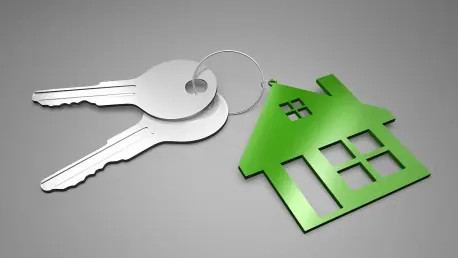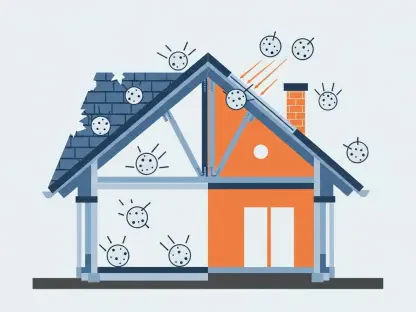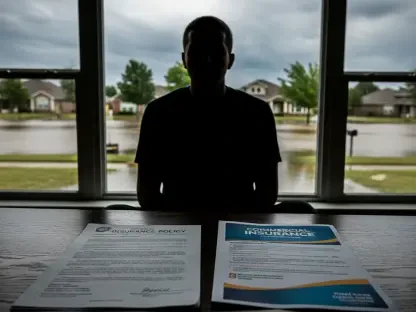The commercial real estate market is facing unprecedented challenges as a confluence of factors, including reinsurance expenses, persistent inflation, regulatory changes, and frequent weather-related claims, are driving up property insurance costs. According to a recent report by the Urban Land Institute (ULI) and Heitman, these escalating insurance expenses are having far-reaching effects on property returns, valuations, and transactional activities within the sector.
Increasing Insurance Costs
Elevated insurance premiums are significantly affecting property owners by reducing net operating incomes, subsequently impacting property valuations and contributing to the faltering of certain real estate transactions. This is leading property owners to reassess their investment strategies, as higher costs directly translate to decreased profitability. Additionally, the increased insurance burden is adding to the operational costs that property managers must contend with, creating a more hostile financial environment for the sector.
Financing Challenges
Lenders are responding to the increased insurance costs by tightening financing terms, including stricter insurance covenants. This further complicates the economic landscape for property investors, who are already navigating a complex web of financial obligations. Stricter financing terms can make it harder for property owners to secure loans, thereby limiting their ability to grow and develop new projects. The compounded effect of higher insurance premiums and tightening credit availability is putting additional strain on a market already challenged by economic uncertainties.
Insurance-Driven Strategies
The “Insurance on the Rise: Climate Risk and Real Estate Investment Decisions” report outlines strategies to secure more affordable insurance coverage and highlights specific investment considerations that could make a property more attractive to insurers. These strategies include enhancing building resilience through better construction practices and incorporating advanced risk management technologies. By adopting proactive measures, property owners can potentially lower their insurance premiums and make their investments more sustainable in the long term.
Market Transformations
As extreme weather events become more frequent and severe, the report indicates that property insurance alone is not a sufficient risk mitigation strategy. A strategic approach to managing physical climate risks is essential for maintaining resilience and profitability in property portfolios. Investors are encouraged to assess climate risks and incorporate adaptive measures such as flood defenses, storm-resistant building materials, and comprehensive emergency planning. This comprehensive approach to risk management is crucial as the market continues to evolve in response to climatic changes.
Challenges for Investors
According to Laura Craft, Global Head of Portfolio Sustainability Strategies at Heitman, investors are now facing higher risks and initial costs as insurers adjust their pricing models to account for increased payouts and risk exposures. The report offers actionable strategies to navigate these new challenges and make informed decisions to weather the evolving landscape. These strategies include investing in climate-resilient properties and diversifying portfolios to spread risk. By doing so, investors can better position themselves to handle the financial impacts of increased insurance costs.
Impact of Natural Catastrophes
Lindsay Brugger, Vice President of Urban Resilience at ULI, notes that natural disasters are causing substantial financial losses for the global insurance market, thus driving up property insurance premiums and introducing further uncertainty in the commercial real estate sector. The financial burden of these catastrophes is being passed down to property owners through higher premiums, making it imperative for investors to consider the long-term implications of climate risks in their investment strategies.
Adaptive Measures
To manage the rising costs effectively, the report suggests that investors should seek creative insurance solutions and manage physical climate risks strategically. This approach aims to build robust portfolios capable of attracting affordable insurance policies while maintaining profitability. Adopting advanced technologies for risk assessment and mitigation can help investors better understand and manage the risks associated with climate change. By doing so, they can create more resilient investment strategies that are better equipped to handle future uncertainties.
Broader Market Implications
The commercial real estate market is grappling with significant difficulties due to a combination of rising reinsurance costs, stubborn inflation, regulatory shifts, and an increase in weather-related claims. These factors are collectively pushing up the cost of property insurance, creating a ripple effect throughout the sector. According to a recent report by the Urban Land Institute (ULI) and Heitman, the climbing insurance expenses are having a substantial impact on the financial health of properties.
Higher insurance premiums are squeezing property returns, impacting valuations, and dampening transactional activities. These inflated expenses are leading investors and property owners to reassess their strategies and portfolios. For instance, some may choose to pass on the additional costs to tenants, thus increasing rent, while others might rethink potential acquisitions or development projects. As the cost of insuring properties rises, the overall landscape of commercial real estate is being reshaped, affecting long-term planning and investment strategies. The sector must adapt to these financial pressures to survive and thrive amid these challenges.









